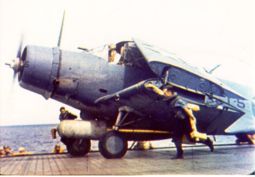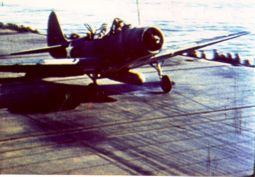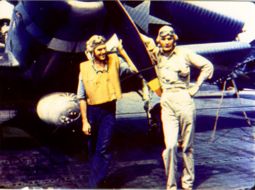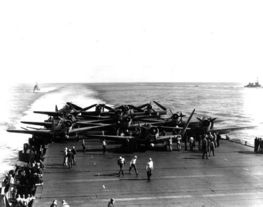PlaneSpottingWorld welcomes all new members! Please gives your ideas at the Terminal.
TBD Devastator
| TBD Devastator | |
|---|---|
| US Navy TBD-1 Torpedo Squadron Six (VT-6), USS Enterprise (CV-6), 1938. | |
| Type | Torpedo bomber |
| Manufacturer | Douglas Aircraft Company |
| Maiden flight | April 1935 |
| Introduced | 1937 |
| Retired | 1943 |
| Primary user | United States Navy |
| Produced | 1937–1939 |
| Number built | 129 |



The Douglas TBD Devastator was a torpedo bomber of the United States Navy, ordered in 1934, first flying in 1935 and entering service in 1937. At that point, it was the most advanced plane flying for the USN and possibly for any navy in the world. However, the fast pace of aircraft development caught up with it, and by the time of the Japanese attack on Pearl Harbor the TBD was already outdated. It performed well in some early battles, but in the Battle of Midway the Devastators launched against the Japanese fleet were almost totally wiped out. The type was immediately withdrawn from service, replaced by the Grumman TBF Avenger.
The TBD Devastator marked a large number of "firsts" for the US Navy. It was the first widely-used carrier-based monoplane as well as the first all-metal plane, the first with a totally enclosed cockpit, the first with hydraulically folding wings; it is fair to say that the TBD was revolutionary. A semi-retractable undercarriage was fitted, with the wheels designed to protrude 10 inches (250 mm) below the wings to permit a "wheels-up" landing with only minimal damage.
A crew of three was carried beneath a large "greenhouse" canopy almost half the length of the airplane. The pilot, of course, sat up front; a rear gunner/radio operator took the rearmost seat, while the bombardier occupied the middle seat. During a bombing run, the bombardier lay prone, sliding into position under the pilot to sight through a window in the bottom of the fuselage, using the Norden Bombsight. The offensive armament that he targeted would be either a single Mark XIII torpedo or a single 1000 lb (450 kg) bomb. Defensive armament consisted of either a .30 or .50 cal (7.62 or 12.7 mm) machine-gun firing forwards, and a .30 caliber (7.62 mm) machine gun for the rear gunner.
The powerplant was a Pratt & Whitney R-1830-64 Twin Wasp radial engine of 900 horsepower (671 kW).
129 of the type were purchased, equipping the carriers USS Saratoga, USS Enterprise, USS Lexington, USS Wasp, USS Hornet, USS Yorktown and USS Ranger.
While the US Navy became aware by about 1940 that the TBD had become outclassed by the fighters and bombers of other nations and a replacement (the TBF Avenger) was in the works, it was not in service yet by the entry of the United States into World War II. Training attrition had reduced their numbers by then to just over 100 aircraft. The Devastator had become a death trap for its crews; slow and poorly maneuverable, with light defensive weaponry and poor armor relative to the weapons of the time. Its speed on a glide-bombing approach was a mere 200 miles per hour, making it easy prey for fighters and defensive guns alike.
The U.S. Navy assigned popular names to its aircraft in late 1941, and the TBD became the "Devastator".
In the early days of the Pacific war the TBD acquitted itself well during February and March 1942 and in the Battle of the Coral Sea, in which Devastators helped sink the Japanese aircraft carrier Shōhō.
Problems were being discovered with the Mark XIII torpedo at this point. Many were seen to hit the target yet fail to explode; it took over a year for the problems to be corrected, including a tendency to run deeper than the set depth.
These problems were not corrected by the time of the Battle of Midway on June 4, 1942. Forty-one Devastators were launched from USS Hornet, USS Enterprise and USS Yorktown to attack the Japanese fleet. Their fighter escort lost contact, and the TBDs started their attacks without protection from the American fighters. Torpedo delivery requires a long, straight-line attack run, making the planes vulnerable anyway, and the slow speed of the aircraft made them sitting ducks for the Mitsubishi Zeros. One by one they fell; only four planes made it back to the Enterprise; none to the Hornet or Yorktown. Worse, not a single torpedo hit its target. However, their bloody sacrifice was not in vain; the suicidally heroic actions of the Devastator aircrews that day drew the Japanese air cover out of its high position just as the Japanese carriers were refueling and rearming their bombers; a window of opportunity mercilessly—and successfully—exploited by the late-arriving SBD Dauntless dive-bombers led by Lieutenant Commander C. Wade McClusky.
The Navy immediately withdrew the TBD from front-line units after Midway. There were only 39 aircraft left in any case. They remained in service briefly in the Atlantic and in training squadrons until 1943. None survived the war.
In fairness to the type, the disaster of the Battle of Midway was as much due to the vulnerability of torpedo bombers against AAA fire and defending fighters fielded by an undistracted enemy fleet. Without a fighter escort to keep off the Zeroes and distract the shipborne AAA guns, not even TBF Avengers escaped nearly as heavy losses.
There are no Devastators in any collection or museum. The only known, possibly salvageable examples are in Jaluit Lagoon in the Marshall Islands. The two TBDs from USS Yorktown were ditched during a February 1942 raid on the island. TIGHAR is currently exploring the possibility of salvaging one to donate to the National Museum of Naval Aviation in Pensacola.
Specifications (TBD Devastator)
General characteristics
- Crew: Three: Pilot, Torpedo Officer/Navigator, Radioman/Gunner
- Length: 35 ft 0 in (10.67 m)
- Wingspan: 50 ft 0 in (15.24 m)
- Height: 15 ft 1 in (4.60 m)
- Wing area: 422 ft² (39.2 m²)
- Empty weight: 6,182 lb (2,804 kg)
- Loaded weight: 9,862 lb (4,473 kg)
- Max takeoff weight: 10,194 lb (4,623 kg)
- Powerplant: 1× Pratt & Whitney R-1830-64 Twin Wasp radial engine, 900 hp (671 kW)
Performance
- Maximum speed: 206 mph (331 km/h)
- Range: miles (km)
- Service ceiling: 19,700 ft (6000 m)
- Rate of climb: 720 ft/min (3.7 m/s)
- Wing loading: lb/ft² (kg/m²)
- Power/mass: hp/lb (kW/kg)
Armament
- 1x 0.30 cal (7.62 mm) machine gun forward-firing
- 1x 0.30 cal (7.62 mm) machinegun in rear cockpit
- 1x 1,000 lb (453 kg) bomb
- 1x Mark XIII torpedo - 1,200 lb (544 kg)
External links
Related content
Comparable aircraft
Related lists
Lists relating to aviation | |
|---|---|
| General | Timeline of aviation · Aircraft · Aircraft manufacturers · Aircraft engines · Aircraft engine manufacturers · Airports · Airlines |
| Military | Air forces · Aircraft weapons · Missiles · Unmanned aerial vehicles (UAVs) · Experimental aircraft |
| Notable incidents and accidents | Military aviation · Airliners · General aviation · Famous aviation-related deaths |
| Records | Flight airspeed record · Flight distance record · Flight altitude record · Flight endurance record · Most produced aircraft |
Naval Fighters: XFD · F3D · F4D · F5D · XF6D - Fighters: XP-48 · P-70 · F-6 · F-10
Naval Attack: DT · T2D · XT3D · BT · TBD · SBD · XBTD · XTB2D · AD · XA2D · A3D · A4D
Bomber: YB-7 · YB-11 · B-18 · XB-19 · XB-22 · B-23 · B-26 · XB-31 · XB-42 · XB-43 · B-66
Attack: XA-2 · A-20 · A-24 · A-26 · A-1 · A-3 · A-4
Reconnaissance: O-2 · OD · O2D · O-31 · O-35 · YO-44 · YOA-5 · PD · P2D · P3D
Transports: C-1 · C-21 · C-39 · C-47 · C-53 · C-54 · C-58 · UC-67 · C-74 · C-110 · C-118 · C-124 · C-133 · C-24
Naval Transports: RD · R2D · R3D · R4D · R5D · JD · R6D - Experimental: DWC · D-558-1 · D-558-2 · X-3
de:Douglas TBD fr:TBD Devastator it:Douglas TBD Devastator nl:Douglas TBD-1 Devastator pl:Douglas TBD Devastator

